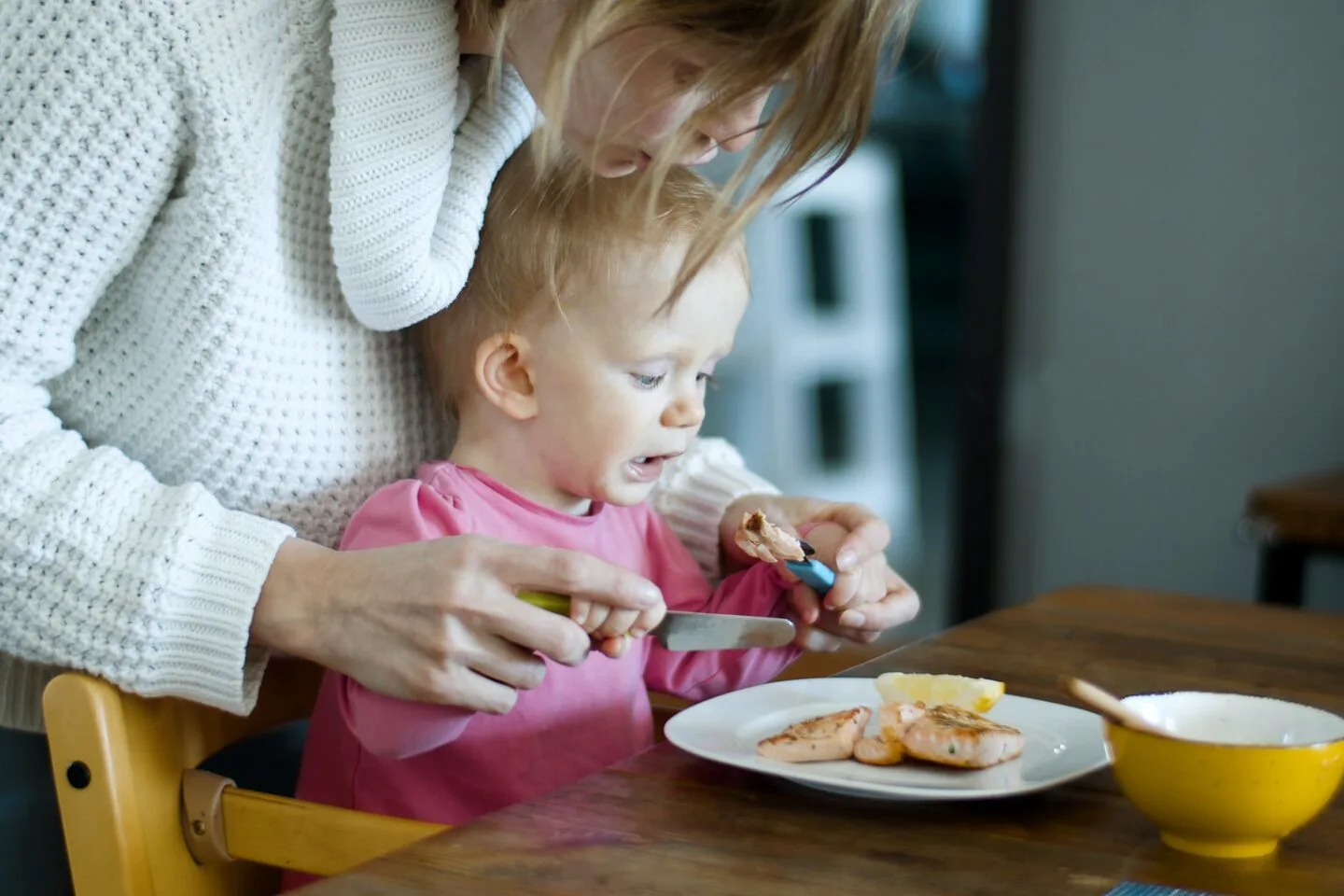When providing nutritional and healthy breakfasts for infants, many parents have asked, “can babies eat Weetabix?”.
Weetabix can be a great breakfast choice for babies that are happily moving onto solid foods and are showing a keen interest in baby led weaning. Unlike Ready Brek, Weetabix has not been specifically formulated with children in mind, however, it can still be a great source of nutrients as part of a healthy, balanced diet.

What you need to know before introducing Weetabix to your baby’s diet.
Before offering your child Weetabix for breakfast, you’re going to want to read this article to ensure that it is the right fit for your child’s diet.
We’re covering the most commonly searched queries that parents often ask alongside “can babies eat Weetabix?”, so let’s take a look at the points below and learn more about adding Weetabix into your child’s diet.
- When can I start feeding my baby Weetabix?
- How to prepare Weetabix for your baby
- The health benefits of offering Weetabix to your baby
- Could your baby have a wheat or gluten allergy?
Let’s take a look at each item individually.

When can I start feeding my baby Weetabix?
The answer is a big yes to “can babies eat Weetabix?”, however, it’s best to wait until your baby is at least 6 months of age.
Most babies start to show a keen interest in solids at this age and the weaning journey can be extremely fun for the children and the parents, especially if you choose to incorporate baby led weaning into the mix.
Some parents do choose to wean earlier, however, it’s recommended by the NHS that parents wait until 6 months old as younger babies may not be able to sit up well or swallow properly.
If you’re keen to read more about weaning at 5 months, take a look at our blog post: Baby Led Weaning At 5 Months, Is It Possible?

How to prepare Weetabix for your baby
The big question is, how can babies eat Weetabix? The easiest and most common way to introduce Weetabix to your baby’s diet is to mash them up with your baby’s usual milk.
At 6 months old, this will be either breast milk or formula. Remember that cow’s milk, or other animal milk, shouldn’t be offered as your baby’s main milk until 12 months of age.
Mashed up Weetabix with milk is a great way to incorporate this cereal into your baby’s diet as it allows them to easily chew and explore the texture of this food. Soft, squishy food like Weetabix helps children to get used to a range of lumpy textures and teaches them how to move food around in their mouths and swallow.
The health benefits of offering Weetabix to your baby
When considering ‘can babies eat Weetabix’, it’s also vital that parents think about the nutritional makeup of the cereal. We all know that Weetabix is a great source of fibre, which is vital for healthy digestion, but did you also know that it’s rich in other essential nutrients, such as:
- Iron
- Vitamin B1
- Vitamin B2
- Vitamin B3
- Folic Acid
These nutrients are all essential for supporting the growth and development of your baby.

Could your baby have a wheat or gluten allergy?
It is possible for your baby to have a wheat or gluten allergy, both of which are, of course, present in Weetabix cereal.
Gluten is one of the main foods that can trigger an allergic reaction and Weetabix is a great way to gently introduce gluten to your baby’s diet.
As with all new foods, it’s a good idea to only give your baby a small amount of food and to never offer more than one new food at a time. It’s also advisable that you wait several days between offering new foods in order to allow room for the observation of any potential allergic reactions.
According to the NHS, the main foods and drinks that can provoke allergic reactions are:
- Cow’s milk
- Eggs
- Foods that contain gluten, including wheat, barley and rye
- Nuts and peanuts
- Seeds
- Soya
- Shellfish
- Fish

Adding extras to your baby’s Weetabix
Can babies eat Weetabix with added extras? Yes! Weetabix is a great food to add other healthy treats to if you want to expand your baby’s food horizons.
Before you start adding extras though, it’s important to note that Weetabix suggests that your child eats less than one full Weetabix to begin with. Once they’re comfortable eating this, the NHS recommends that 7 – 9 month olds move onto one full Weetabix.
The NHS recommends mixing one full Weetabix with milk and serving it with finger food sized pieces of fruit. There are plenty of fruits that are delicious with Weetabix, including:
- Banana
- Apple
- Pear
- Mango
- Kiwi
- Plum
- Peach
- Canned fruit slices
Instead of using milk, you could even try mixing your baby’s Weetabix with yoghurt. Remember that babies do not need added sugar in their diets, so there’s no need to add sugar or syrup to your baby’s Weetabix.
You can find a huge collection of Weetabix recipes for the whole family to enjoy here.

Other tasty breakfast recipes to try
When it comes to introducing solid foods to your little one through baby led weaning, breakfast can be an exciting time to explore new flavours and textures. Here are a few of our delicious breakfast recipes that are not only nutritious but also perfect for encouraging your baby’s self-feeding skills.
- Pancake Recipes
- Mushroom Omelette
- Breakfast Muffins
- Banana Eggy Bread
- Waffles
- Crumpets
- Ready Brek

Can babies eat Weetabix?
In conclusion, when it comes to the question “Can babies eat Weetabix?” The answer is yes, but with a few considerations.
Weetabix is rich in essential nutrients like iron, vitamins B1, B2, B3, and folic acid, which are crucial for your baby’s growth and development.
However, be aware of potential wheat or gluten allergies. Additionally, you can add healthy extras like fruits to enhance the flavour and nutritional value of Weetabix.
Remember, variety is key, and there are plenty of other tasty breakfast recipes to explore during your baby-led weaning journey.
